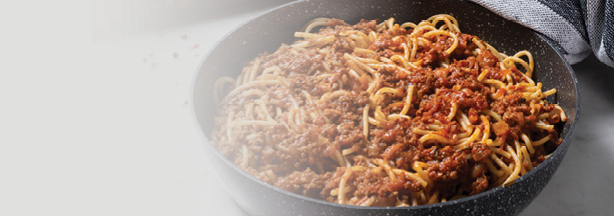Lowering Potassium in Potatoes
Written by DaVita® renal dietitian, Sara Colman, RD, CSR, CDE
Certain high-potassium foods, such as potatoes, can be soaked in water to reduce their potassium content for people on the kidney diet. For years, renal dietitians have instructed patients on low-potassium diets to cut up and leach or soak potatoes to reduce the potassium load. That’s because one small potato (1-3/4 inches to 2-1/4 inches in diameter) contains more than 700 milligrams of potassium. And one average-sized, whole, baked potato (2-1/3"x 4-3/4" or about 1-1/3 cups, if measured) contains 926 milligrams of potassium with the skin or 610 milligrams of potassium without the skin. If you are on a low-potassium diet, this is a considerable amount for one serving.
What’s the best way to reduce potassium in potatoes?
For the most effective potassium removal, potatoes must be cut into small pieces, sliced thin or grated. If boiled at least 10 minutes in a large pot of water, potassium is reduced by at least half the original amount. These potatoes will still contain 100 to 200 milligrams of potassium in a 1/2-cup serving so people on a low-potassium diet are encouraged to pay attention to portion control.
If boiling isn’t the planned cooking method, potassium may still be reduced by slicing or cutting potatoes into small pieces or grating them and soaking them in a large amount of water at room temperature or warmer for greater potassium removal.
The least effective method of removing potassium is to soak potatoes in the refrigerator, then prepare without boiling first.
What about other forms of potatoes?
Canned potatoes go through a natural leaching process due to soaking in the canned water. A 1/2-cup serving of drained canned potatoes that is one inch in diameter contains 206 milligrams of potassium.
Instant potatoes are highly processed and lose some potassium during processing. A 1/2-cup serving of prepared potato granules or flakes contains 150 to 220 milligrams of potassium.
Hash browns, either frozen or home prepared, contain 340 to 450 milligrams of potassium in a 1/2-cup portion. Grated potatoes that are soaked or boiled according to the researchers’ methods and then fried contain between 100 to 150 milligrams of potassium in a 1/2-cup portion.
A comparison of 16 different varieties and brands of potato chips reveals a range of 265 to 495 milligrams of potassium for one cup of chips or a one-ounce bag.
A small order of French fries from five major fast food chains ranges from 470 to 510 milligrams of potassium. That’s about 20 milligrams for each French fry. A super-sized order has 1,210 milligrams potassium—more than half the daily allowance for a low-potassium diet.
What about leaching or soaking other vegetables?
While leaching and soaking work for potatoes, it’s not recommended that you soak or boil all vegetables in water because water-soluble vitamins including C, as well as B vitamins, are lost in the water. Also, all vegetables are different and don’t lose the same amount of potassium when leached or boiled.
A 2006 study on a variety of tuberous root vegetables (batata, cocomalanga, dasheen, eddo, black yam, white yam, yellow yam, yampi, malanga, red yautia white yautia and yucca) that were consumed as a staple by different ethnic groups determined that leaching alone did not remove enough potassium in these vegetables. By boiling, rinsing and boiling again, dasheen, yams and yampi were reduced below 200 milligrams of potassium per 100 grams. Batata, white yautia and yuca were reduced to below 300 milligrams after double boiling. Cocomalanga, eddo, malanga and red yautia remained over 300 milligrams after boiling.

Download
Cookbooks
Access free kidney-friendly cookbooks from DaVita dietitians.
1,000,000+ Enjoyed So Far!

Eating Out
Guides
See kidney-friendly food and drink choices to consider when eating out at your favorite restaurants. Choose from 12 cuisine types.
